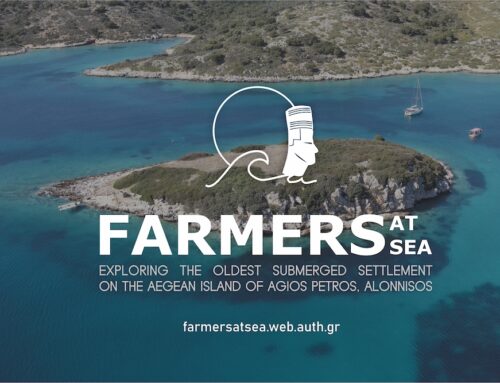D&D II – Istanbul’s Harbour of Life – Yenikapi, Turkey
In this episode, we visit the world’s largest archaeological dig, with the largest collection of Byzantine shipwrecks. This truly is a spectacular site and one any maritime archaeologist would dream to be part of.
Here, we head to Istanbul, Turkey, where in 2004 development work led to the discovery of a Theodosian Harbour. Beneath this lay even older material which dates all the way back to a Neolithic village. With layer upon layer of well-preserved archaeological remains, this is one of the largest archaeological digs in the world. And the work is still not finished.
Lucy begins by talking with Michael Jones, from the Institute of Nautical Archaeology. Michael has been working on the site for several years, in particular on some of the 37 shipwrecks which were found. Michael describes the area, which spans over 58,000 square metres and explains how both the cargo ships and military ships, known as galleys, were found.The galleys were designed to be fast with no cargo; if the ship is wrecked, the timbers would break up and float away, meaning they are rarely found intact. But at Yenikapi they have found six galleys, the only ones ever found from this period! Michael speaks about some of the remarkable preservation and finds such as a whole camel skeleton, a child’s shoe, and even an ancient green leaf under one of the ships.
Bettany visits the conservation laboratories and speaks with Ufuk Kocabaş from Istanbul University. He shows her some of the ship timbers and other organic remains. Ufuk explains how the timbers have been treated with a combination of PEG (a sort of wax which replaces the cell structures to help conserve the wood), and freeze-drying. Some of the other finds include a basket full of cherries, and even a brazier containing the captain’s meal, As Bettany says, it’s almost like a capsule frozen in time; a window into the daily life and workings of this ancient harbour city.
The huge amount of material and the sheer size of this site has meant that there is still much more work to be done, documenting, conserving and understanding the remains. This is the largest collection of ships known from Antiquity, alongside the harbour remains, the huge expanse of organic material, and the older layers which lie beneath means the team still have plenty to do, and more secrets to reveal.
Thank you to Michael Rice Jones from the INA and Ufuk Kocabaş from Istanbul University.





